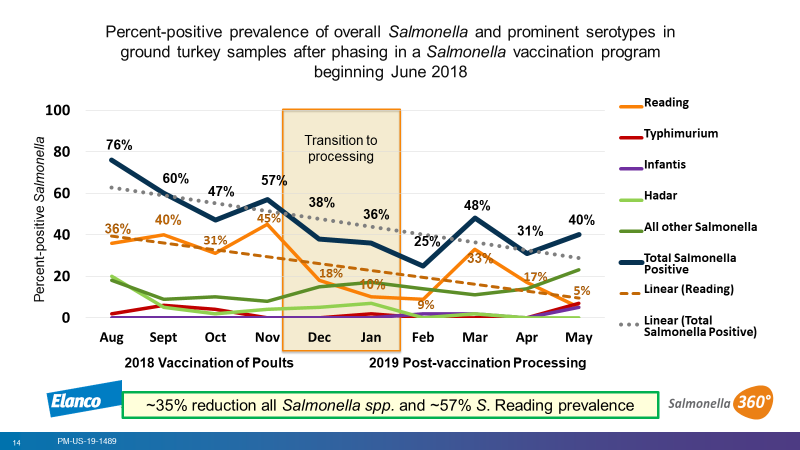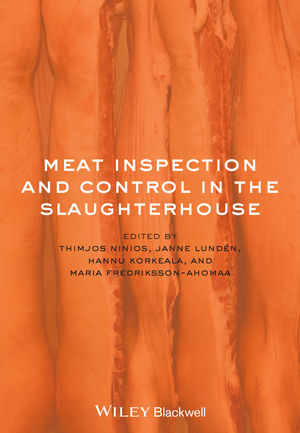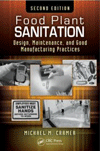Salmonella Reading is not usually a pathogen of concern, however when an outbreak does occur it garners plenty of public attention. There have been two recent S. Reading outbreaks in North America. The most recent outbreak occurred in 2019 and was linked to contaminated ground turkey products.1
Managing Salmonella Reading
Managing Salmonella takes consistent monitoring and testing to identify sources of infection in live production. Many Salmonella serotypes, like S. Reading, can be transmitted from contaminated eggs from the breeding stock to meat birds. In order to effectively reduce Salmonella infections in turkeys, a surveillance program can be implemented as a strategy to identify management practices that reduce the presence of Salmonella in breeders and offspring.
Producers can easily monitor breeder flocks’ environments by sampling barns with boot swabs on a regular basis. Those swabs are then analyzed by a lab to identify pathogenic serotypes to aid in strategizing efforts toward effective interventions.
Vaccination to Prevent Salmonella Reading
Turkey producers can also manage S. Reading with vaccination programs utilizing active and inactive Salmonella vaccines formulated for breeders and meat birds. Protective immunity provided by vaccination has been shown to significantly reduce Salmonella in breeder hens and their offspring,2,3 leading to lower Salmonella loads on birds entering the processing facility.
Elanco recently partnered with a turkey producer to study the efficacy of Salmonella vaccines in commercial turkeys to reduce Salmonella, including S. Reading, contamination in ground meat samples. The study involved evaluating Salmonella presence in ground turkey samples before vaccination was implemented and after the complex began the vaccination program.
A total of 557 ground turkey samples were collected over a 10-month period to test the prevalence of Salmonella during the pre-vaccination period, during the vaccination transition period, and during the post-vaccination period.
Overall, Salmonella prevalence declined by approximately 35% in the ground turkey samples tested during the post-vaccination period. Salmonella Reading contamination in ground samples was significantly reduced by approximately 57% compared to the baseline period.4

Table: Percent-positive prevalence of overall Salmonella and prominent serotypes in ground turkey samples after phasing in a Salmonella vaccination program beginning June 2018
Implementing a vaccination program to reduce the load of Salmonella in turkeys entering the plant allows improved efficacy of in-plant interventions to further reduce Salmonella contamination of turkey products destined for consumers. A comprehensive Salmonella control program to reduce Salmonella contamination in pre-harvest turkey production directly impacts the farm-to-fork continuum to reduce the likelihood of foodborne illness. NP
1Centers for Disease Control and Prevention. CDC investigation notice-Salmonella outbreak linked to raw turkey products. 2019. Available at:
https://www.cdc.gov/media/releases/2019/s-0215-salmonella-outbreak-raw-turkey.html
2 Dorea FC, et al. Effect of Salmonella vaccination of breeder chickens on contamination of broiler chicken carcasses in integrated poultry operations. App Env Microbiol. 2010;76(23):7820-5.
3 Armwood BT, et al. Assessing the ability of maternal antibodies to protect broiler chicks against colonization of Salmonella Heidelberg. Avian Diseases. 2019;63(2):289-93.
4 Elanco Animal Health. Impact of Megan Egg on Salmonella Reading contamination in ground turkey. 2019.








